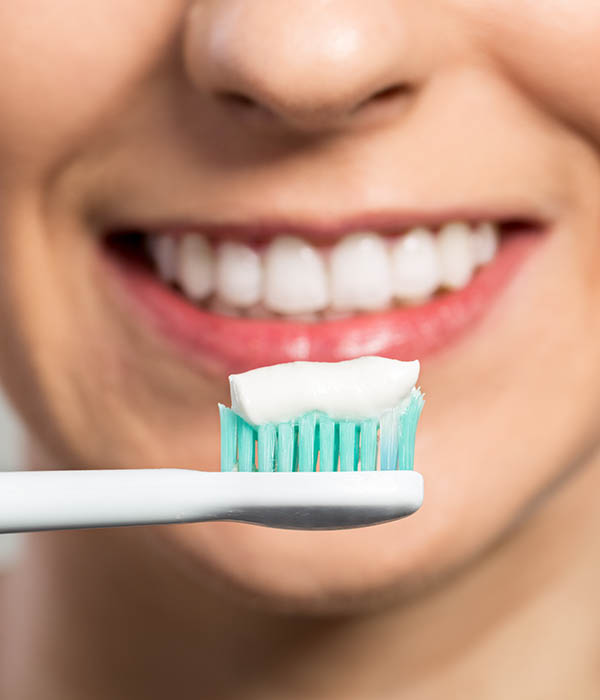Oral Hygiene
Prioritize Your Oral Hygiene
Periodontal disease is a buildup of bacterial plaque found on the teeth close to the gum line. Although cavities seem scary, periodontal and gum disease are much stronger contributors to tooth loss. Additionally, periodontal disease is extremely common, with over 75% of adults encountering periodontal disease during their lifetime. Scary, we know, but the great news is that these statistics can be prevented! Brushing and flossing daily, along with regular dental checkups, is the greatest way to prevent this build-up from occurring. The elimination of germs and bacteria in the mouth maintains a healthy and intact smile!

Brushing Your Teeth
Although plaque may be damaging, brushing easily removes it! Plaque deposits build up quickly after eating and drinking, and if they are not brushed away at least twice a day, they can lead to tooth decay and periodontal disease. One day of improper hygiene is all it takes to make your mouth vulnerable to disease! Plaque that hasn’t been removed hardens and becomes calculus (or tartar). Although calculus cannot be moved with regular toothbrushes, your dentist, thankfully, has special instruments designed to remove it!
How to Brush
- Hold your brush at a 45-degree angle where the teeth and gums meet.
- Brush in circular motions.
- Apply medium pressure but not so much so that you experience discomfort.
- Make several rotations with your brush, covering both the outsides and insides of the teeth, front to back.
- Rinse your mouth thoroughly, removing any plaque or particles that were loosened.

Flossing – It’s Essential!
Flossing daily is one of the most effective ways to prevent periodontal and gum disease. If you skip flossing, you are missing 40% of your teeth’s surfaces! Oftentimes it is between the teeth where the toothbrush does not reach, where periodontal disease first develops. In order to floss properly follow these steps:
- Take an approximately 18” long piece of floss and wrap it around the middle finger of each hand, pinching between the thumb and index finger.
- Pull the floss taut and gently slide the floss between each tooth and under the gum line.
- Motion the floss up and down and side to side, making contact with both surfaces of the adjacent teeth.
- As you continue to floss, be sure to floss between all teeth, rotating the floss off the middle fingers to expose clean, fresh floss as needed.
- After all teeth have been flossed, rinse vigorously with water to remove any excess bacteria or particles left in the mouth.
*A small amount of bleeding may occur – this is normal! If you are experiencing intense pain, contact us!*
Sensitive Teeth
Many patients may experience tooth sensitivity to hot or cold. Although this is common after various dental treatments, this sensitivity should be temporary. Another reason for the sensitivity is improper cleaning of the teeth. If you are experiencing sensitive teeth continually, contact our office. Dr. Choi or Dr. Fagundes may recommend special toothpastes or mouth rinses to help relieve discomfort.
Mouth Rinses
Mouth rinses (or mouth wash) help to freshen the mouth, fight bad breath, and remove loose food particles after brushing. Although mouth rinses are great to incorporate into your hygiene routine, they should never replace brushing, flossing, or regular examinations.
Cleanings
Regular cleanings provide you with the cleanest smile possible and also prevent many oral complications. Removing tartar and plaque dramatically improves oral health and reduces the risk of gingivitis and periodontal disease. At Carmel River Dentistry, our hygienists use state-of-the-art dental tools to manually remove unwanted buildup. If necessary, our hygienist may choose to use an ultrasonic device if heavier buildup is present. Lastly, the surfaces of your teeth will be polished, removing stains and leaving your mouth feeling fresh and completely clean.
